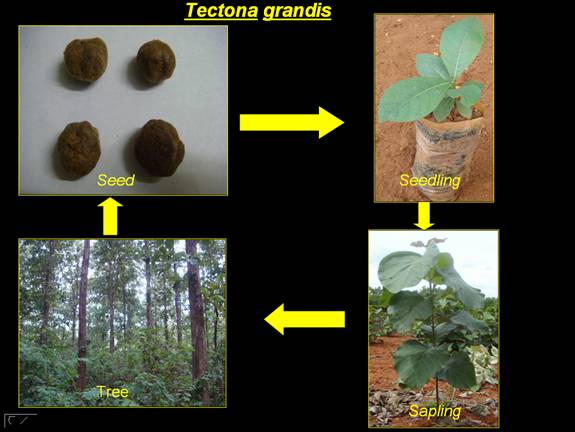
|
|
| Home | About Forestry | Eco-Tourism | Forestry Addresses | FAQs | Contact Us | |
|
| Forestry Technologies | |
TEAK
Origin: Indigenous to India and North-East part of Java. Rotation: In natural forest, rotation is 100-120 years, in artificial regeneration it is 70-80 years and in coppice regeneration it is 40-60 years. Climate and soil: Mostly occurs in monsoon climate, under tropical and sub tropical conditions. Sandy loam soil, 6-7 pH not exceeds 8.5 & well drained. Rainfall: 1000-1500 mm adequate and even less than 750 mm per year. Spacing: 1.8x1.8 m, 2x2 m is generally initially applied. (Subsequantly thinned in stages) Nursery practices: 50-60% germination percentage and 2.5 to 3 kg seeds are required to prepare one mother bed and derived 1000-1500 seedlings. Stumps are prepared out of Planting: It is done in pre monsoon period which has high success. Square or line planting is done in 45-60 cm3 size pits for seedlings and for stump planting, 15 cm Plant protection Important pest: Leaf defoliators (Hyblaea puera) and leaf skeletonizer (Eutectona machaeralis) Important disease: Leaf blight (Rhizoctonia solani) and fungal on fruits (Alternaria sp) Special features: Presence of "Tectol" phenol in sap gives high resistance to sap wood rot and termites. Uses: Timber value is superior, so called "King of Trees". It can be used for all purposes. Yield: It yields a volume of 1.58 cum of timber per year per tree (increment) |
|
| Home | About Forestry | Eco-Tourism | Forestry Addresses | FAQs | Contact Us | |
|
| © All Rights Reserved. TNAU-2014. |
|
